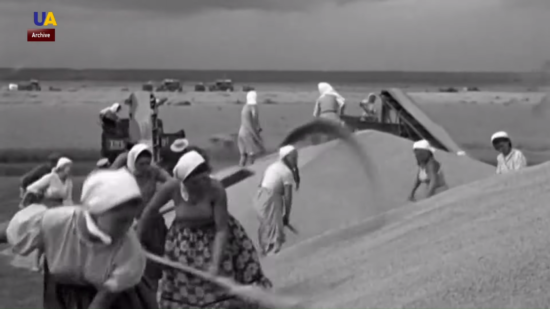His family has a big plot of land in Pyrohiv near Kyiv but in the early 1930s everything was taken away from them, everything they earned over many generations.
“The whole family worked. They had a lot of kids, big storages. They were the target of the ‘dispossession of the kulaks’ campaign. The Kapshuchenko’s house was taken away. That house is still there in Pyrohiv. Near it is a well. It is still called ‘Prohor’s well’,” Orlenko says.
The Kapshuchenko family was deported to the Ural mountains, an ordinary event in those years. The campaign against wealthy peasants and farmers was at its peak. The government was pretending to have the best interests of the poor in mind; the property was taken only from the rich bourgeois and given to those who did not have property.
Volodymyr Telyshchak of the Ukrainian National Memory Institute says Soviet propaganda attempted to divide peasants, “They would demonize wealthier villagers and even created a special term for them: the kulaks. They were the first target,” Telyshchak points out.
Among several goals by the government, the first was intimidation of villagers. “Second, kulaks were independent and respected, and they had to be removed from the villages to decrease the possibility of any resistance,” Telyshchak explains.
Prokhor Kapshuchenko was still drawn back home, so he escaped from exile, returned to Kyiv and tried to return back to his village. That cost him his life.
Orlenko says he opposed collectivization and always spoke out against it and soviet authorities. Of course someone reported him and he was taken in by the NKVD. Soon they executed him.”
The Soviet government used confiscated farms and land plots to create collective farms where they forced local peasants to work. Telyshchak says the purpose was not to develop agriculture but to maintain peasantry by preventing an economic alternative.
Ukrainian villages tried to resist, and in the 1930s even managed to halt collectivization. Female peasants rioted and defended their cattle “in order to have milk and feed their children,” Telyshchak says. He adds that after initial backing down, collectivization would begin again in the fall–but in a lighter form.
State propaganda promised that collective farms would increase labor productivity. The Soviet government demanded increased harvests by 150 percent because Ukrainian villages had to feed the soviet proletariat.
Historians say that it was the collectivization that gave the Soviet government the tools to organize the artificial famine to come on the territory of Ukraine.













